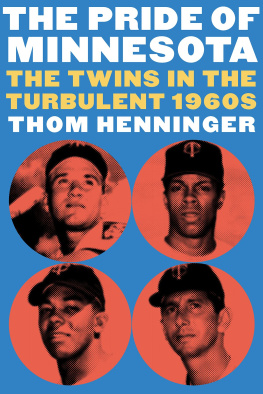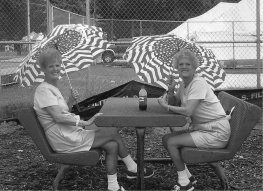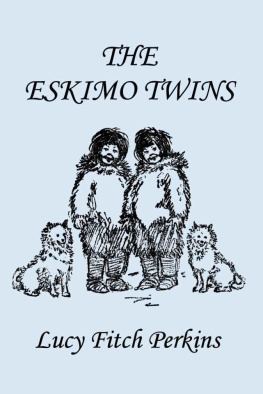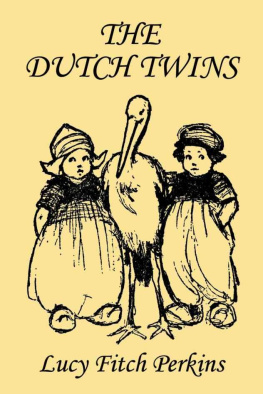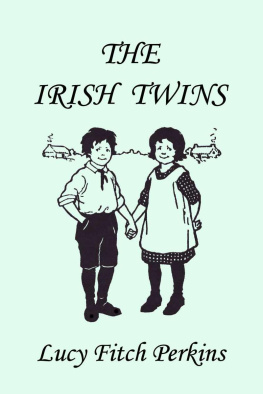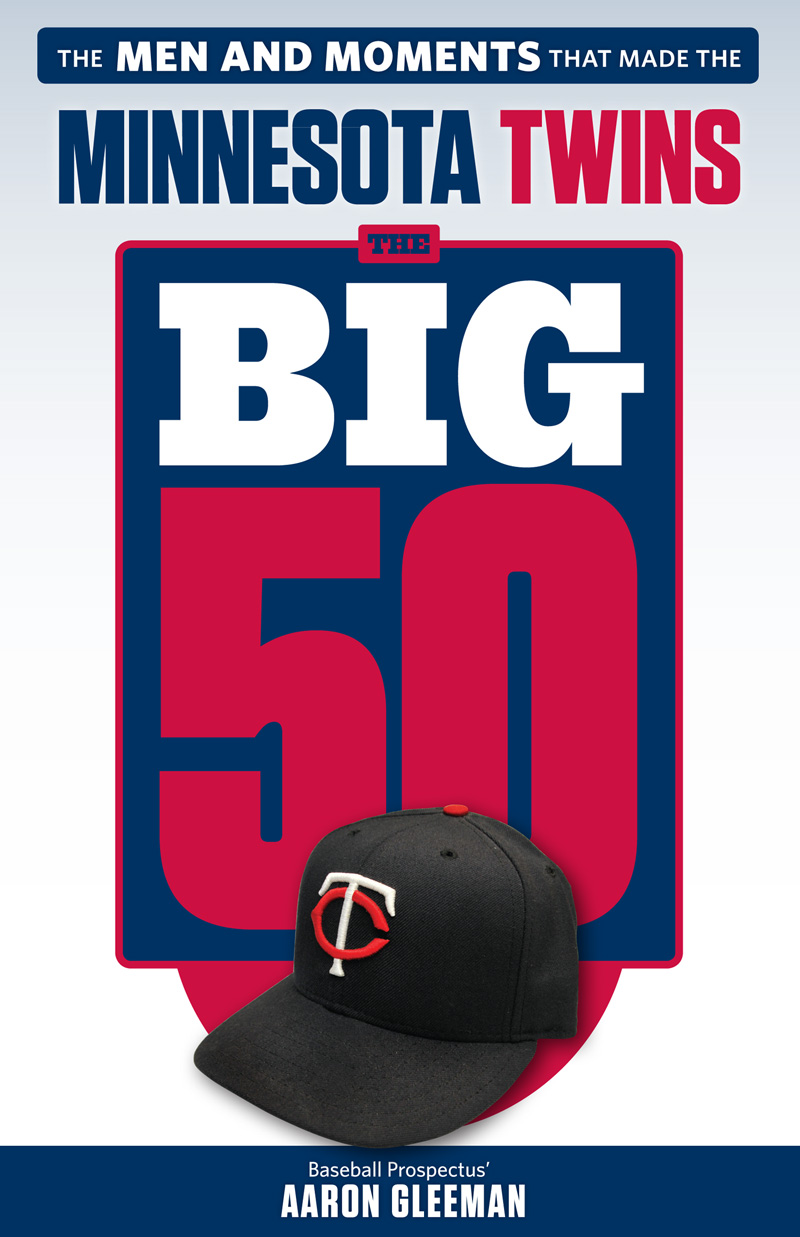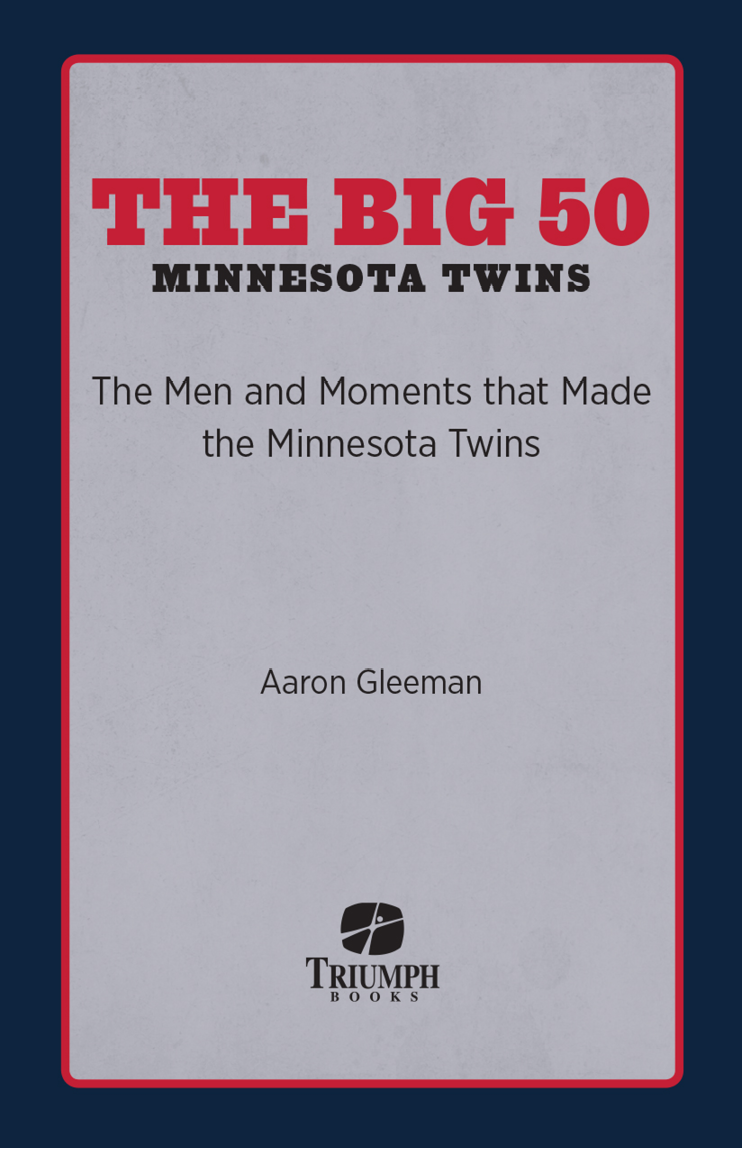
To Judi, for never throwing out my baseball cards; to Jon, for teaching me that baseball was a worthy obsession; to Becky, for being the best thing to ever happen to me.
Contents
1. Harmon Killebrew
In the spring of 1954, a casual conversation at the ballpark between Washington Senators owner Clark Griffith and actual Idaho Senator Herman Walker turned into one of the most important moments in Minnesota Twins history. Walker told Griffith about a stocky high school kid from Payette, Idaho, who was crushing semi-pro pitching in the Idaho-Oregon Border League. Whatever he said must have made an impression, because Griffith sent Senators farm director Ossie Bluege across the country for an in-person look.
Once there, Bluege found that he wasnt alone. Idaho was suddenly overrun with scouts who had heard tales of the majestic home runs and had come to see 17-year-old Harmon Clayton Killebrew for themselves. He was the real deal, with plans to play baseball and football at the University of Oregon, so Bluege reported back to Griffith that the usually stingy owner needed to loosen the purse strings to land Killebrew. Get him at all costs, Bluege later told the New York Times . The sky is the limit.
For once, Griffith listened, shelling out a then-massive $30,000 bonus to beat the Red Sox and several other teams for the kid. Because of the rules surrounding high-priced amateur signings in the 1950s, so-called bonus babies had to be kept in the big leagues for two years instead of being allowed to develop normally in the minors. Killebrew immediately joined the Senators, officially becoming a major leaguer six days before his 18 th birthday in June 1954. And then he collected dust.
Killebrew started just 22 games and received a total of 141 plate appearances from June of 1954 through June of 1956, hitting .205 with eight homers. He was a third baseman stuck behind All-Star Eddie Yost on the depth chartand the Senators had All-Star Mickey Vernon winding down his career at first base. But in retrospect, the team with a combined 178284 record probably could have found a bit more playing time for their high-priced prospect.
Finally allowed to develop freely once the two-year mandate ended in June 1956, he got his first taste of the minors and thrived. Killebrew played 70 games for Charlotte of the Single-A South Atlantic League, hitting .325 with 15 home runs and a .627 slugging percentage that was at least 100 points better than every other hitter in the league. Called back up to Washington in September for the first regular playing time of his big-league career, Killebrew hit .246 with one homer in 20 games.
Save for a few brief call-ups totaling 22 games, Killebrew spent most of 1957 and 1958 in the minors, where he led the Double-A Southern League in home runs as a 21-year-old in 1957 and hit a combined .280 with 48 homers and 148 walks in 266 games at Double-A and Triple-A. He had progressed from high-priced bonus baby to high-upside prospect, and in 1959 the Senators decided Killebrew was ready for primetime, trading Yost to the Tigers to clear a spot at third base.
Killebrew homered in his first game and never looked back, tying Rocky Colavito for the league lead with 42 homers and making his first All-Star team at age 23. He also ranked among the ALs top five in slugging percentage, total bases, RBIs, and walks. Killebrew was a fully-formed, middle-of-the-order monster, although in that era his high strikeout total was frowned upon50 years later 116 strikeouts in 153 games would qualify more as a contact hitterand his defense was very shaky at third base.
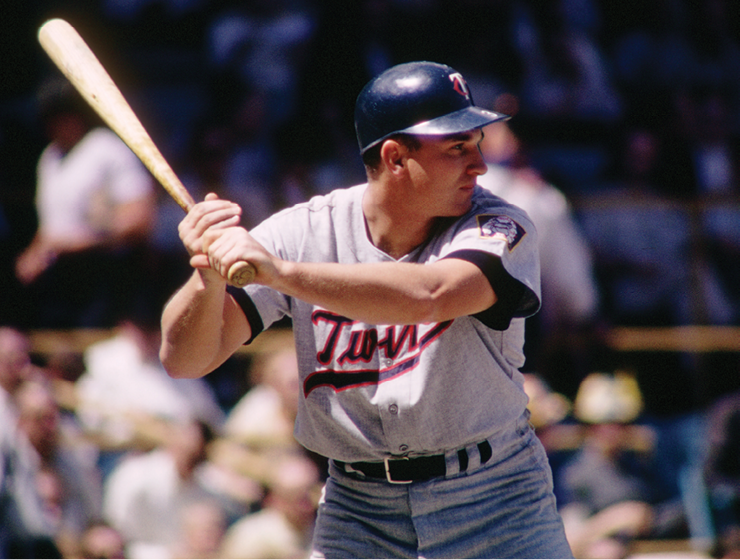
I didnt have evil intentions, but I guess I did have power. Harmon Killebrew
Killebrew split time between third base and first base in 1960 and was even better at the plateupping his batting average, on-base percentage, and slugging percentagebut he missed 30 games with injuries. Even sitting out more than a month of the season, he still placed fifth in the AL with 31 homers. Despite his best efforts, the Senators were below .500 in 1960 for the seventh straight season. During that offseason the franchise moved from Washington to Minnesota and became the Twins.
His first year in Minnesota was spectacular, as Killebrew hit .288 with 46 homers, 107 walks, and 122 RBIs in 150 games. His home run total was good for only third in the league, because Roger Maris set the MLB record with 61 and teammate Mickey Mantle had 54. Six decades later no other Twins player has topped Killebrews homer total from his first season in Minnesota. In fact, no other Twins hit even 40 homers until Brian Dozier more than five decades later. Killebrew did it that first year and then again in 1962, 1963, 1964, 1967, 1969, and 1970.

Killebrews power was unmatched in his eraand it was one helluva era. He led all major leaguers in the 1960s with 393 homers, ahead of Hank Aaron with 375, Willie Mays with 350, and Frank Robinson with 315. In the American League from 195575, nearly one-third of all 40-homer seasons were by Killebrew, who reached 40 homers eight times in his first dozen seasons as a regular. His walk-drawing ability was also unmatched, as he led the 1960s with 970 walks when only one other player, Mantle, cracked 800.
At the time of Killebrews retirement in 1975, his 573 career homers ranked fifth in MLB history and his 1,559 walks ranked seventh. Even now, after more than 50 years of bigger and bigger power numbers across baseball, Killebrew still ranks 12 th in homers and 15 th in walks. Hes one of just nine players in baseball history with at least 500 homers and at least 1,500 walks, and of those nine only Babe Ruth, Barry Bonds, and Jim Thome have more homers and more walks than Killebrew.
Those league- and MLB-wide totals show Killebrews sustained dominance as a walks-and-power savant at a time when that skill set was not yet fully appreciated and strikeouts drew more criticism than warranted. However, nothing drives home how amazing he was quite like Killebrews place on the all-time Minnesota Twins leaderboards. He arrived in Minnesota as a superstar, writing and re-writing the team records on an annual basis, and six decades later no one (except Dozier, for one season) has pushed him off the lists.
Here are the Minnesota Twins single-season home run leaders:
49Harmon Killebrew, 1964
49Harmon Killebrew, 1969
48Harmon Killebrew, 1962
46Harmon Killebrew, 1961
45Harmon Killebrew, 1963
44Harmon Killebrew, 1967
42Brian Dozier, 2016
41Harmon Killebrew, 1970
39Harmon Killebrew, 1969
Here are the Minnesota Twins single-season walk leaders:
145Harmon Killebrew, 1969
131Harmon Killebrew, 1967
128Harmon Killebrew, 1970
114Harmon Killebrew, 1971
107Harmon Killebrew, 1961
106Harmon Killebrew, 1962
103Harmon Killebrew, 1966
Hes also the Twins leader in OPSby more than 50 pointsand slugging percentage, extra-base hits, times on base, and RBIs. Oh, and Killebrew never laid down a sac bunt. Not once. He hit home runs like few people can in the category of height and distance, said Calvin Griffith, who took over for his father as Twins owner and general manager. Harmon didnt hit many line drive home runs. He would hit the ball so blooming high in the sky, they were like a rocket ship going up in the air.



